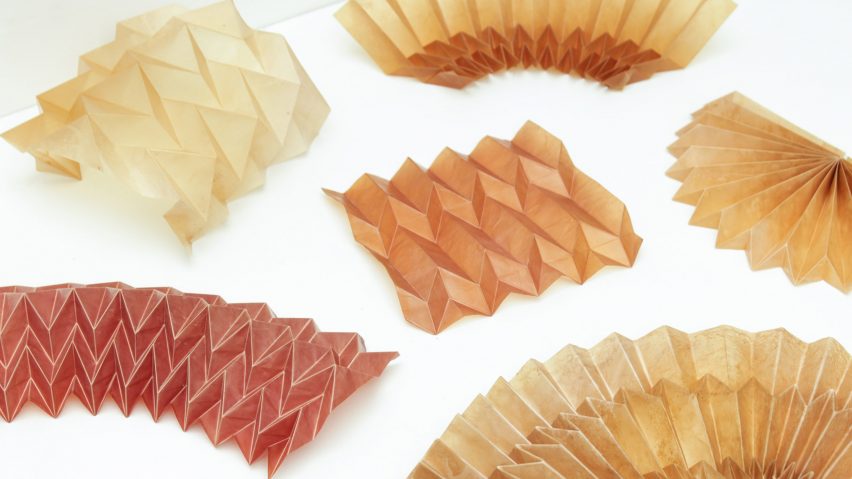
Studio Lionne van Deursen exhibits material created by microorganisms at Milan Design Week
Material research firm Studio Lionne van Deursen has showcased its Unfold designs, made from a material created by bacteria, as part of the Isola Design District exhibition at Milan Design Week.
The studio created the three-dimensional Unfold designs using a biofilm made from bacterial cellulose – a symbiotic culture of microorganisms and yeast that becomes solid when dried.
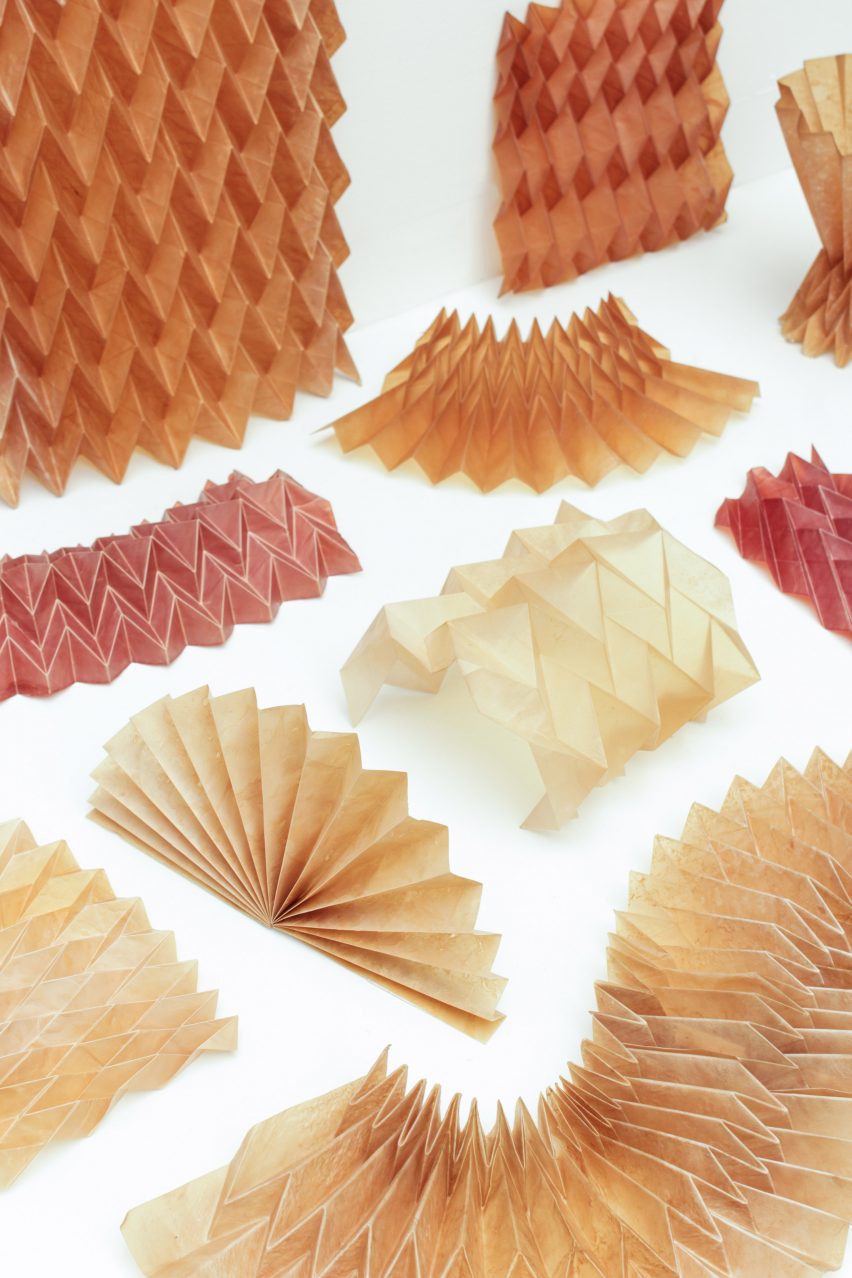
"Bacterial cellulose is made using yeast and bacteria in a fermentation process," studio founder Lionne van Deursen told Dezeen.
"The bacteria are fed by a sweetened green tea," she added. "During this process, bacteria spin nanofibres of cellulose and produce a layer on the surface. When this layer has dried, it becomes a solid material."
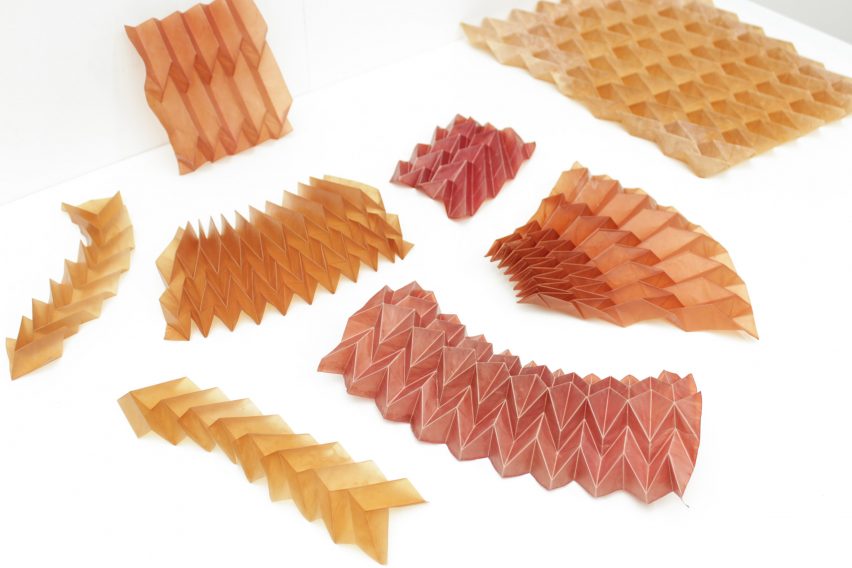
Studio Lionne van Deursen has previously created a lamp collection, Imperfect Perfection, from the same material, and now aimed to investigate how the biofilm could be used to create more complex shapes.
For Unfold, it used simple folding techniques to produce dynamic structures that can contract and expand when the material is bent.
"The shapes are an outcome of different folding experiments with a sheet material," Van Deursen said. "By applying geometric folds to the biofilm you can make different folding patterns. These folded grids can be bent in different positions to create a variety of shapes."
The result of this investigation was a selection of material samples with varying transparencies and a range of colours created by natural dyes.
"The transparency of the material depends on the thickness of the biofilm," Van Deursen said.
"By dyeing this material with natural dyes, different shades are created due to the thickness of the material. The dyes I use are obtained from homegrown fruits and vegetable waste," she continued.
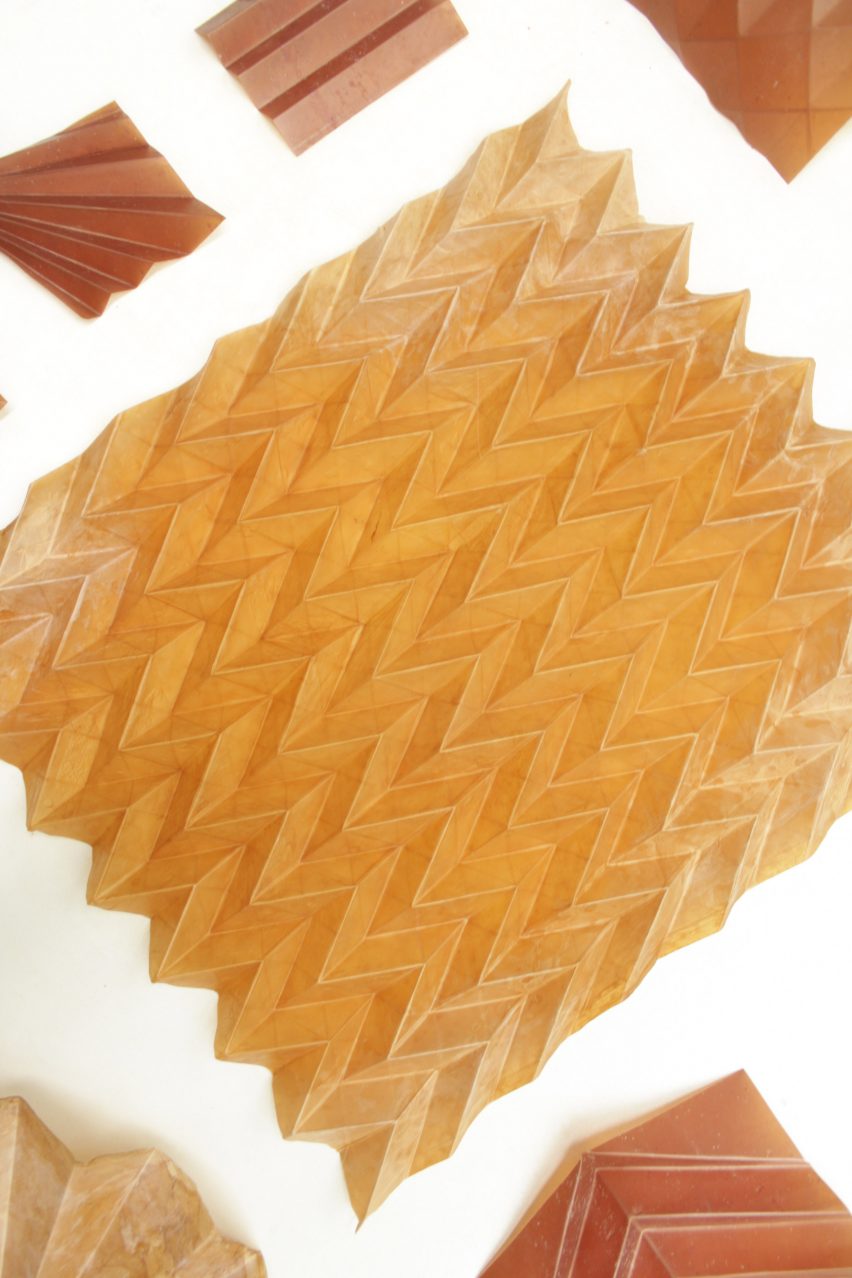
The studio believes the material could have multiple applications, with products made from the biofilm being fully compostable at the end of their lives.
"The material can compost and is 100 per cent biodegradable when put in soil," said Van Deursen.
"I’m convinced this material has great potential to have further applications. I’m still doing a lot of research to this material and during experiments I see a lot of new purposes that can be researched."
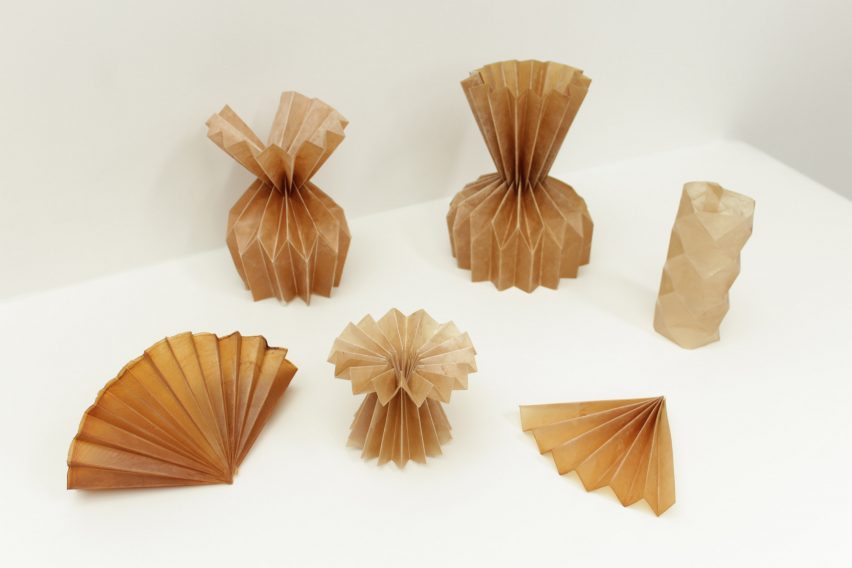
Studio Van Deursen is a material research studio conducting experimental research to explore the possibilities of new materials.
"The main goal of the studio is to develop sustainable projects with materials that are not harmful for the environment," the founder said.
"It's not only about environmentally friendly materials, but also about a sustainable production process," she continued. "During the design process, the material is used as efficiently as possible, leaving minimal waste of the grown material."
Other compostable materials featured on Dezeen include Notpla's edible, biodegradable packaging made from seaweed and plants, and a collection of materials made from algae, clay, and foam by Natural Material Studio and Frama.
The photography is by Lionne van Deursen.